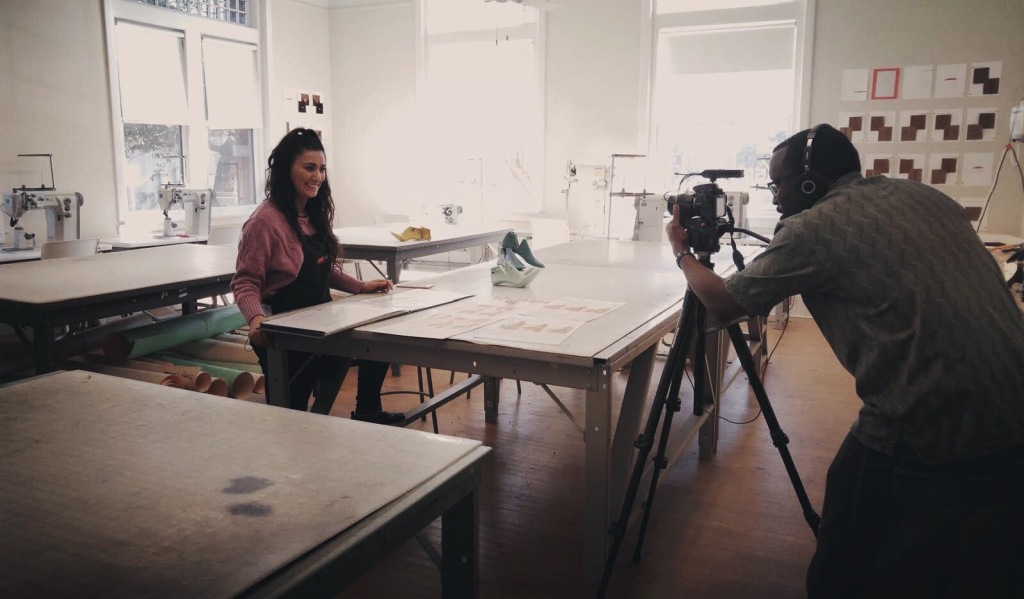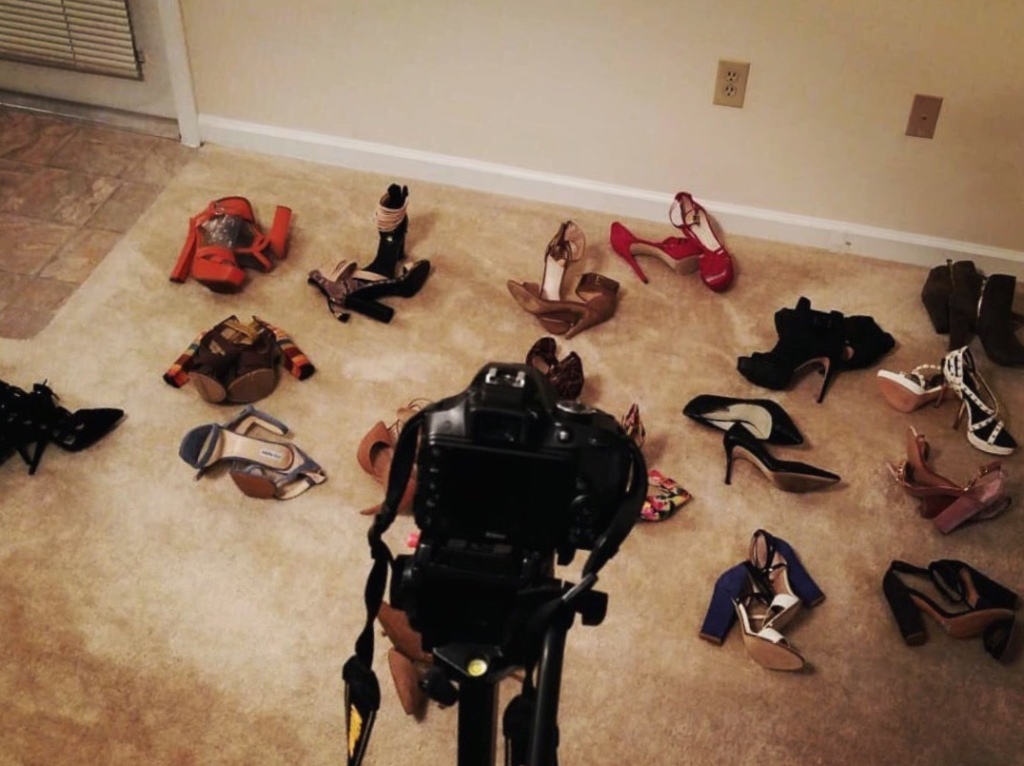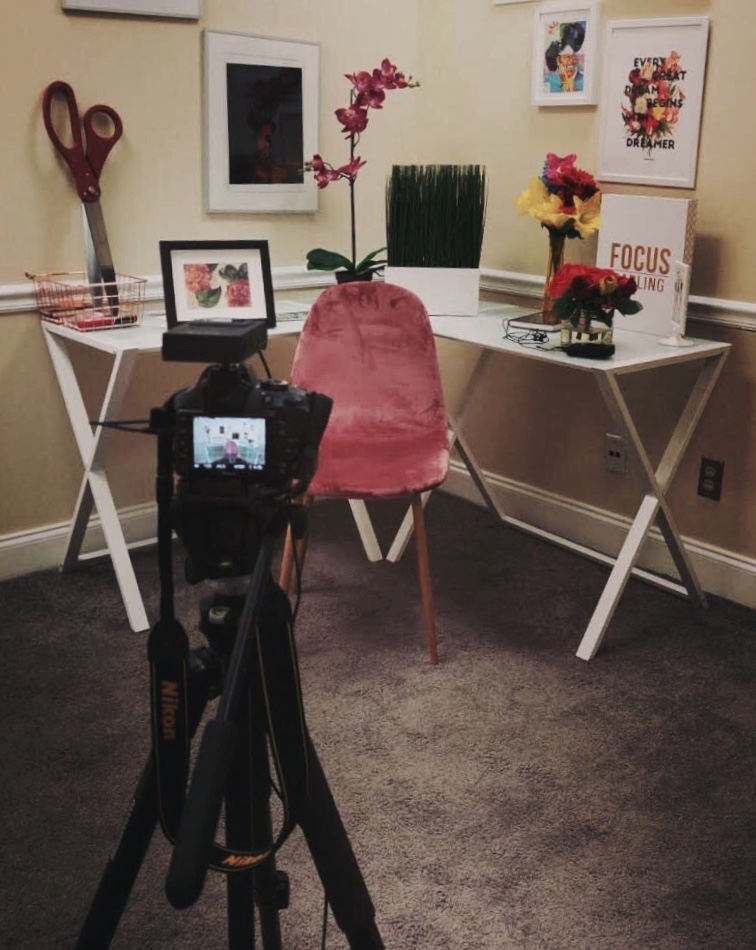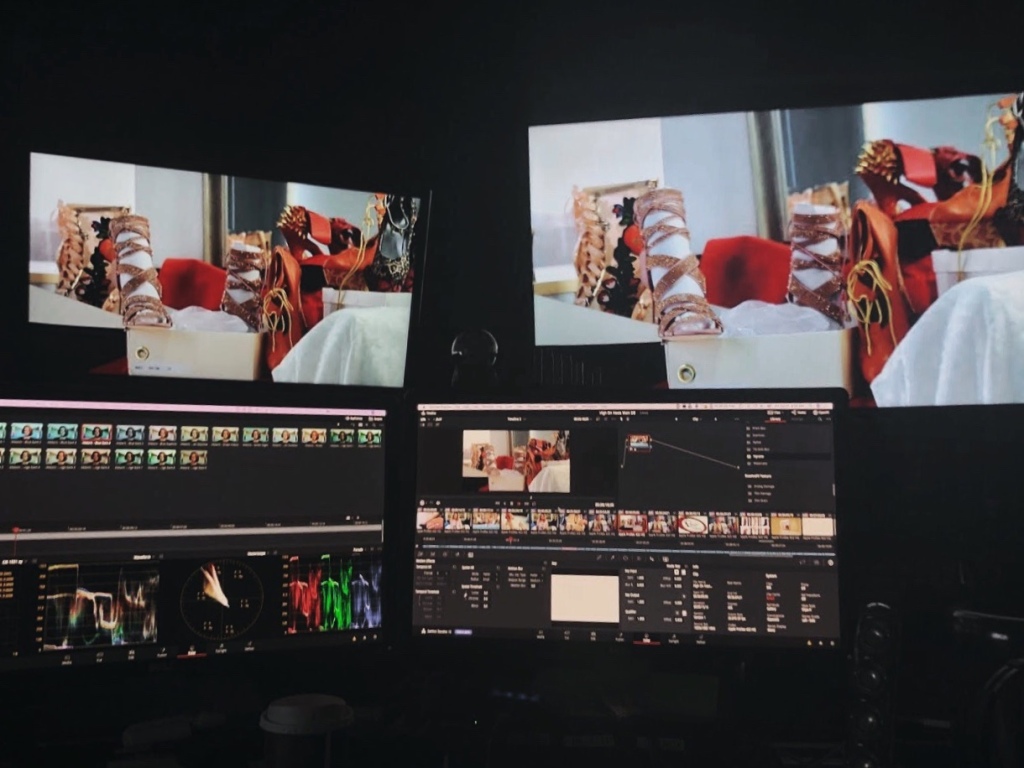
The official poster for High on Heels
One of my favorite things about being a part of the fashion industry are meeting the creatives behind the glitz and glam.
In this case, I had the chance to virtually sit down with director Adelin Gasana, to discuss his latest documentary High On Heels (which you can watch on Amazon or on YouTube).
Let’s start with the basics: where are you from?
I was born an identical triplet in the beautiful country of Rwanda and then moved to the U.S. as a young child. The first half of childhood I lived in Chicago. The second half I grew up in South Florida.
Where did you go to school?
I went to the University of West Florida in Pensacola, Florida for my undergrad. I graduated with magna cum laude honors in a double major Bachelor’s Degree in TV/Film and Philosophy.
Were there any films/television shows/movies as well as notable people who introduced and led you to pursue filmography as a career?
In the beginning, I was inspired by the timeless classics of Ingmar Bergman and Akira Kurosawa. Later on, PBS Frontline and ESPN 30 For 30 documentaries played a big part for me in learning and working in films. Current documentary filmmakers like Ken Burns, Alex Gibney, Raoul Peck, Ezra Edelman, Liz Garbus and my personal favorite Errol Morris tops the list of influential figures for me in the genre of documentary.
Did these experiences influence your filming style in any way?
Yes, watching films and television programs of all genres and storylines helped construct my filmmaking style and approach. The Ken Burns effect of the slow pan on a still image to Alex Gibney’s conversational approach to on-camera interviews are some examples of my visionary approach to documentary film storytelling.

What was your first film and what was it about?
My first professional film (post-college) was entitled, Cuban America. It documents the 5-decade impact of the Cuban Diaspora on the Greater Miami region.
Why did you choose that topic? Can you explain the thought process behind your first documentary?
Growing up in South Florida in an immigrant family, I was always fascinated on how Miami-Dade County became the Spanish-speaking, Hispanic-dominated culture hub that it has become. I began the film project with research and lay conversations with residents of the community. Over time, I found out how the Cuban-American story is a quite recent (a generation and a half) story compared to other stories of immigrant communities that impacted a given region (which usually spans over two or three generations).
What are some other documentaries you’ve created? Were there some that stood out more than the others?
My first student film was on feminism entitled, The F Word (watch parts I and II here). It was a 2-part feature on how the term feminism became stigmatized over time in the sociopolitical movement for women’s rights, equality and advancement. The film also documents the history of the U.S. women’s movement through the three waves of feminism.
My last documentary as a student filmmaker was on Existentialism, a philosophical movement. That one was deep and stood out the most. I had a lot of fun creating that and putting it all together.

Now before we move on to High On Heels, have you dabbled in fashion before?
No, High On Heels is my first official fashion film.
Were there any people, films, and/or designers that inspired you to write and eventually create a documentary about the iconic footwear?
No specific designers or films inspired me and my producer Lola Kayode to take on this project. In our research/development phase of the documentary, we learned a lot about the centuries-long history of high-heeled shoes and wanted to document its evolution. We also got a glimpse at the short-term and long-term health effects in wearing high heels. I thought that was an important reality to document.
As for people, I was really interested in women in general, their personal expression, and lifestyle choices when it comes to wearing high heels. For them, high heels are a lifestyle experience from the time they are young girls trying them on to wearing them regularly for the first time to when they are middle-aged women and only dare to wear heels part-time. I cannot think of another mainstream accessory item that has such a profound impact on a person’s everyday lives.
From beginning to end, how long did it take you to complete this fashion documentary? Would you ever do another?
I would ABSOLUTELY do another fashion film.
It took my team approximately 15 months from concept to completion in the making of High On Heels. For me, the best part of documentary filmmaking is uncovering the layers of nuance in order to document facts and get at the truth. If there’s another fashion piece that dares to attempt a take on another profound topic in a different, deeper angle, which can make for a compelling film, it would be a worthwhile pursuit.
What are your thoughts on women wearing heels? Do you agree or disagree with the women who were featured in your documentary?
I don’t think it’s my place at all to agree or disagree on what a woman decides to wear. In fact, I would like to think that this film is good enough to speak for itself. From understanding a little more about the history of high heels to getting a glimpse on health effects from a podiatrist and chiropractor, there’s more than enough for viewers–male or female–to formulate an opinion on this topic.
As a straight man, I am no different than the next guy in appreciating a woman dressed up wearing high heels when they are out and about. My thoughts for women is essentially something that came up throughout the documentary–balance. It’s all about balance. Balancing the time and place to wear heels, balance the pain-discomfort threshold, balance fun and sexy with calm and composed, etc.

Lu, a lifestyle blogger and boutique owner from Canada, asks: in your opinion, how high is too high?
According to the American Podiatric Medical Association (which we documented in the film), a woman should not wear heels above two inches. Pole dance fitness courses have women wearing 5-8 inch platform heels. Your average stiletto regularly comes in 3-4 inches.
How high is too high is all about the wearer and the experience he or she wants when they put it on and head out. I don’t come with any medical advice since–after all I am simply a documentarian, a fly on the wall. All women are made differently and can tolerate higher than normal heels. Other women would just rather rock sneakers and flats.
Anonymous asked: in today’s world where fashion is more blurred than ever before, what is your opinion on men wearing heels?
Let’s not forget that in the beginning, men were the first to wear them. Heels dating back to the Middle Ages were more rounded than today’s stiletto and pump. Today, there’s a new movement within the LGBTQ+ community and beyond where men are now wearing high heels.
It’s kind of making a comeback, if not, a full circle. For example, drag queens in burlesque shows have been rocking, dancing, strutting and performing on stage in high heels.

Anonymous asked: do you think there is a male equivalent form of footwear that has the kind of influence high heels have on society?
This question is one in which I posed to my producer as well as all my interviewees featured in High On Heels. I cannot think of another footwear that shapes a man’s identity, personal expression, and behavior in near equivalence to women and their high heels.
The only fashion statement that comes close for men would probably be a suit and tie. After all, suits denote professionalism, maturation, and sophistication. However, I am still unconvinced that a suit and tie have a similar deep, introspective effect on a man as a woman with her stiletto/pump/platform/wedge shoe.
Last but not least, how would you describe your own sense of style?
As for my personal, fashion style, I am reserved but in a noticeably fashionable way. From time to time I will go out, show up to work dressed in different kinds of garments that are not mainstream – like a dashiki, a nod to my African identity. I like getting creative with colors and texture. Brown is my favorite color so it blends well with dark color palettes like black and gray yet stands out among brighter colors like red or yellow.
My choice in clothing, shoes, etc. is obviously more in comfort than anything else. Depending on the setting I am in and end up going to I am less interested in ostentatious presentations where people come to see me for what they expect someone of my background to be and look like. I dress in a way where you will see it as an extension of my personality and also something that is out of the ordinary.
I would like to thank Adelin for taking the time to talk to me about his documentary High On Heels. If you’d like to watch his film, you can see it here on Amazon or YouTube.
Visit Adelin’s website here to see more of his works.
Find him on social media:

This is such an interesting interview! I love that Adelin says he will let the film speak for itself; I want to watch this documentary.
I have never been one to wear heels a lot and my preferred shoes are platforms; most heels and stilettos end up making my feet hurt, so I loved Adelin’s answer to how high is too high! It is all about doing what you are comfortable with.
Thanks for sharing!
LikeLiked by 1 person
Thanks, Jaya! You should! It’s currently on YouTube and on Amazon (I linked it in the blog post).
I agree! I love my heels but not to the point where I’m uncomfortable haha. 😅
LikeLiked by 1 person
This was such an awesome interview. Thanks for sharing it. I enjoyed reading it!
LikeLiked by 1 person
I’m glad to hear that you enjoyed it! x
LikeLike
Interesting interview! I have never heard of high on heels before, but I am going to check it out now. Hopefully it’s on Netflix. Thanks for sharing your conversation with its director!
LikeLiked by 1 person
Thanks, Ming! It was definitely a cool experience. It’s not on Netflix right now but you can watch it on YouTube or Amazon. 🙂
LikeLike
What a fun interview to read! I loved reading what Adelin thought about everything from the filmmaking process to the progression of high heels over the years. This definitely makes me want to watch the documentary myself and see how it all came together. I’m glad you shared this!
LikeLiked by 1 person
Thanks girl! I feel the same; it was pretty neat to see the perspective from the director’s point of view. I hope you’ll enjoy watching it! You can find it on YouTube or Amazon. x
LikeLike
This is a really interesting interview. I definitely want to watch High On Heels as well as some of the other films mentioned.
LikeLiked by 1 person
Thanks, Kelly! You can watch High On Heels on YouTube or Amazon (I linked it in the post). x
LikeLike
Great interview, thank you for sharing! I’d love to watch this 🙂
LikeLiked by 1 person
Thanks, Jenny! I hope you’ll enjoy watching it! x
LikeLike
I’ve never heard of High On Heels, sounds extremely interesting, I’ll give it a watch soon! 😊 Thanks for shining light on it.
LikeLiked by 1 person
Thanks for checking out this interview and I do hope you give it a watch! It was enlightening. x
LikeLike
I haven’t heard of this before! Thank you for sharing. A great interview!
LikeLiked by 1 person
Thank you so much, dear! I’m glad you enjoyed the interview! x
LikeLiked by 1 person
This was a really good interview, I didn’t even know you did interviews on your site, I only remember reading about your fashion advice before
LikeLiked by 1 person
Thank you! That means a lot to me! Since MM is a fashion and style blog I wanted to include all aspects of the industry, including behind the scenes content like this interview, aside from styling tips.
LikeLiked by 1 person
Love this interview! It made me curious to see the full documentary now. 🙂 I always buy heels but end up wearing them once, or if it’s a lucky pair, twice, because I can’t get used to walking on them. That’s why I always admure women who walk on them so elegantly, without effort. Thanks for sharing!
LikeLiked by 1 person
Thanks, Angie! I hope you do check the documentary out. Wearing heels is definitely a skill to master, that’s for sure! x
LikeLike
Will check out this documentary! Thanks for posting this great interview 🙂
LikeLiked by 1 person
Thanks for checking it out! x
LikeLike
Really interesting – I love reading where people got their inspiration from and how they started out! Becca x
LikeLiked by 1 person
Right? It’s pretty fascinating! x
LikeLike
Such a fun interview! I haven’t heard of it but will definitely be checking it out!
LikeLiked by 1 person
Thank you! I hope you’ll check it out! x
LikeLike
This is such an interesting interview! I will definitely be checking out this documentary! Thanks for sharing! 🙂
melissakacar.blogspot.com
LikeLiked by 1 person
Thanks, Melissa! Hope you enjoy watching it! x
LikeLike